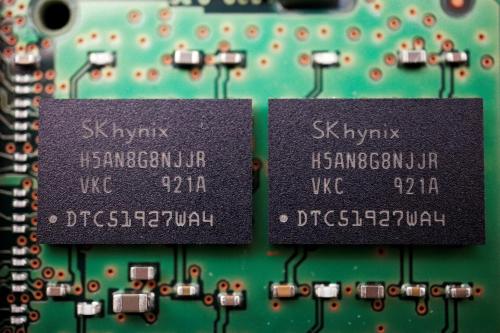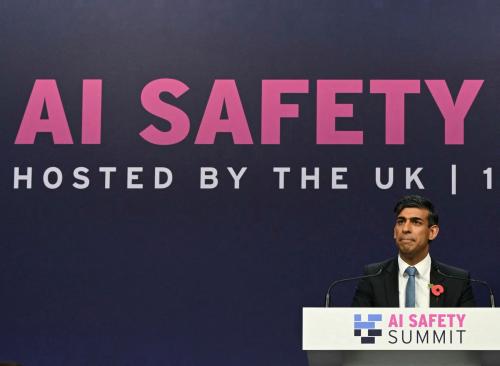Artificial intelligence (AI) raises an acute set of challenges with respect to export control. On the one hand, AI opens the door to potentially transformative military technologies. The United States has a strong interest in ensuring that U.S.-developed AI technology is not used by geopolitical rivals in ways that threaten national security. A key framework to further that interest is the Export Control Reform Act of 2018 (ECRA). The ECRA gives the Department of Commerce the authority to promulgate new export control rules regarding AI technologies.
On the other hand, the more expansive a system of export control restrictions on AI becomes, the more cumbersome and impractical it is to enforce. In addition, adopting overly broad new export control restrictions aimed at blocking cloud-based access to AI computation by geopolitical rivals also risks impairing AI research at U.S. universities. The result would be a less robust and innovative U.S. AI ecosystem.
Leakiness of current rules
In October 2022, October 2023, and April 2024, the Bureau of Industry and Security (BIS) of the Department of Commerce released a series of export control rules aimed at limiting access by China to the most advanced chips used for AI computations. Unsurprisingly, this has spurred a thriving black market in smuggled chips.
But smuggling isn’t the only way for entities in export-restricted jurisdictions to access the computing power of the most advanced AI chips. A June article in Computerworld stated that “the existing rules omit the provision of chips-as-a-service, or cloud computing, creating a potential loophole for Chinese companies to benefit from the chips as long as they remain on US soil.” And an August 2024 Wall Street Journal article titled “China’s AI Engineers Are Secretly Accessing Banned Nvidia Chips” explained that “brokers are making overseas computing power available and offering a high degree of anonymity.”
These loopholes underscore that obtaining the benefits of AI computing does not require physical possession of the chips performing the computations. Cloud computing abstracts away the location of computing hardware. Just as a person can benefit from the convenience of performing a Google search without knowing the location of the servers doing the work of generating the search results, a company can train an AI model using cloud-based servers. Rules aimed at preventing a company—or a country—from physically obtaining the actual computing chips used to train AI models have limited effectiveness when those chips can be used from afar.
More restrictions on access to AI?
One possible response is to give the U.S. Department of Commerce the authority to broaden export control rules to restrict access to cloud-based AI computing. This was the goal of H.R. 4683, a bill introduced with bipartisan sponsorship in the House of Representatives in 2023 titled “Closing Loopholes for the Overseas Use and Development of Artificial Intelligence Act.” The bill, which has not made it out of the Committee on Foreign Affairs, would require the Department of Commerce to “prohibit United States persons and United States subsidiaries from providing support for the remote use or cloud use of any integrated circuit listed under Export Control Classification Number 3A090 and 4A090 of the Export Administration Regulations by an entity located in the People’s Republic of China or Macau.”
In May 2024, a bipartisan group of legislators introduced H.R. 8315, titled the “Enhancing National Frameworks for Overseas Restriction of Critical Exports Act” or “ENFORCE Act.” This bill, which received a 43-3 vote in the Committee on Foreign Affairs in late May, would allow the government to require that U.S. persons obtain a license for the “the export, reexport, or in-country transfer” of “covered artificial intelligence systems.”
H.R. 8315 provides an interim definition of “covered artificial intelligence system” that includes “an artificial intelligence system that… exhibits, or could foreseeably be modified to exhibit, capabilities in the form of high levels of performance at tasks that pose a serious risk to the national security and foreign policy of the United States or any combination of those matters, even if it is provided to end users with technical safeguards that attempt to prevent users from taking advantage of the relevant capabilities.” Depending on how it is interpreted, this definition could arguably be read to cover the majority of contemporary advanced AI technologies.
The challenge of defining boundaries on restricted AI
If language like this is included in a bill that is passed by Congress and signed into law, BIS wouldn’t necessarily adopt the broadest possible scope of coverage. There is every reason to believe that BIS would proceed with full awareness of the tradeoffs involved. But it is nonetheless important to consider the potential consequences of broad interpretations of controlled AI technology, which would risk sweeping in a host of technologies that have many applications unrelated to national security.
A good example is AI-based image recognition. Image recognition has a long list of civilian applications. It is used to enable AI systems to describe paintings to sight-impaired persons and to recognize faces for identity authentication. It is also used to help analyze medical images and to enable driverless vehicles to perceive their environment and navigate accordingly.
Image recognition has national security-relevant applications as well. For instance, it can be used in a military context for identifying targets. Image recognition is thus a classic example of dual use technology—that is, one with both civilian and military applications. Many—and perhaps most—categories of advanced AI technologies will fall into this dual-use category.
AI, “deemed exports,” and U.S. universities
An additional important policy consideration is that export control rules cover more than the physical transfer of restricted items to entities in targeted countries. As BIS explains, “[t]he obligation to obtain an export license from BIS before ‘releasing’ controlled technology to a foreign person is informally referred to as a deemed export. Releases of controlled technology to foreign persons in the U.S. are ‘deemed’ to be an export to the person’s country or countries of nationality.” In other words, provision of an export-controlled technology to a foreign national in the United States is also an “export.”
If a wide swath of leading-edge AI technology is designated as “controlled,” American universities will no longer be able to effectively perform AI research. According to a 2021 report from the National Foundation for American Policy, 74% of full time electrical engineering graduate students and 72% of those in computer and information sciences are foreign nationals. There are many graduate students in these disciplines who are working on AI. University research, including research by foreign graduate students at U.S. universities, is a key source of AI innovation.
Today, U.S. universities routinely provide their graduate student AI researchers with access to advanced, often cloud-based, AI-computing technologies. But if permitting graduate students to work at the frontiers of AI risks exposing universities to export control violations, universities will be forced to dramatically scale back their AI research.
The alternative—setting up partitioned university research spaces and projects accessible only to graduate students with the proper citizenship—is impractical for the majority of universities. And even if it were practical, it would be bad policy. American universities have a long history of welcoming foreign engineering graduate students who go on to have highly successful decades-long careers in the U.S. Many of them create U.S.-based startups that grow to employ hundreds or thousands of engineers. Choking off that pipeline is a surefire way to impede future American-led AI advances.
Ensuring continued U.S. AI innovation
Unintended consequences are always a concern with technology regulation, and particularly so when it comes to AI export control. Expanding AI export control rules to target cloud-based access to advanced AI computing risks having limited effectiveness against targeted entities, because those entities would still try to access AI cloud computing services through a series of hard-to-disentangle intermediaries.
It also risks undermining AI research at U.S. universities, thereby further accelerating a trend towards increasing industry dominance of American AI research. While industry AI research is extremely important, it should complement, not replace, university research. After all, not only does university AI research generate fundamental advances in knowledge, but it also helps make the U.S. a destination of choice for top foreign talent and provides vital early-career training for future AI professionals.
For the U.S. AI ecosystem to continue to thrive, U.S. universities need to be able to continue attracting the most talented AI researchers from around the world. AI export control rules should be crafted to avoid creating collateral damage to this fundamentally important aspect of the U.S. AI innovation ecosystem.







Commentary
The tension between AI export control and U.S. AI innovation
September 24, 2024